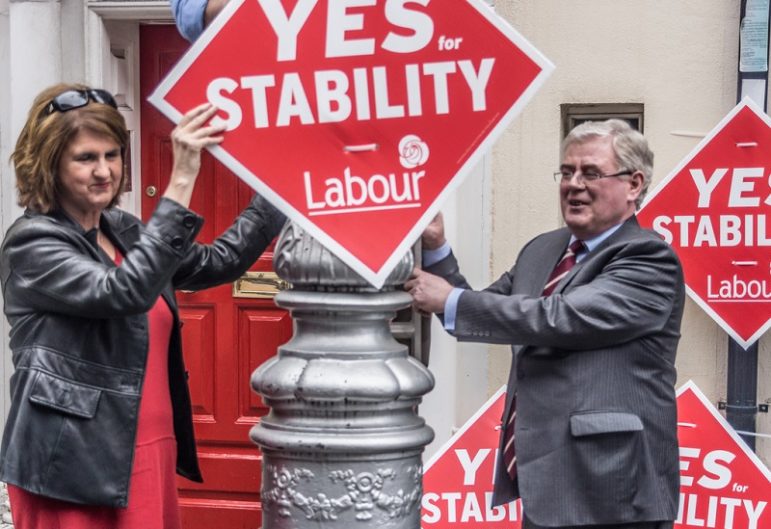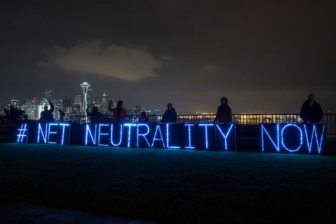
May 23, 2016; New Yorker
The New Yorker magazine’s story “Enter Left” has a profile of British Labour Party leader Jeremy Corbyn in the context of the emergence of Sixties-style socialism in Western democracies over the past several years. The 66-year-old Corbyn, who never held a party office in his 33-year career as a Labour Member of Parliament, won a surprise victory in a hotly contested intraparty election last fall in the wake of a disastrous outcome for Labour in last year’s general elections.
Scruffy, tieless, rumpled, plainspoken Jeremy Corbyn could have been cast for the role of a sixties Socialist. New Yorker writer Sam Knight recounts a cloakroom comment about Corbyn being called “Chauncey Gardiner,” a reference to the dimwitted servant who almost becomes U.S. President in the movie Being There. Since his election to the position of party leader, Corbyn has been under attack from Labour mainstream acolytes of Tony Blair and, some say, the mainstream media.
Despite these attacks, the rank and file of the party, disillusioned by the moderate and interventionist tilt that Blair brought to “New Labour,” have stuck by their new leader, and he seems to be solidifying his base in the run-up to national elections in 2020. Three recent markers of Corbyn’s likely survival are the inability of his party opponents to find an alternative, the fact that Labour candidates held their own in recent local elections, and the election of Sadiq Khan as Mayor of London.
Sign up for our free newsletters
Subscribe to NPQ's newsletters to have our top stories delivered directly to your inbox.
By signing up, you agree to our privacy policy and terms of use, and to receive messages from NPQ and our partners.
Author Sam Knight associates Corbyn’s rise with the emergence of Bernie Sanders in the U.S., the Syriza Party in Greece, and the Podemos Party in Spain as movements growing out of frustration with economic inequality and foreign interventions. Each of these movements is characterized by commitments to reducing economic inequality, opening government to participatory democracy, and curtailing international adventurism. All are in open revolt against the “corporate democracy” movements of Blair’s “New Labour,” Bill Clinton’s “New Democrats,” and George W. Bush’s “Compassionate Conservatism.”
So what about 1960s-style activism is so appealing to today’s electorate? One hint comes from Howard Dean’s campaign for the Democratic Party nomination in 2004, when Governor Dean and his visionary campaign manager Joe Trippi rode a “youth movement” in the early primaries. Much about the Sanders movement builds on the strengths of the Dean campaign, which, though unsuccessful, morphed into Democracy for America, the Netroots Nation movement, and Organizing for Action, the third version of what was initially Obama for America and became Organizing for America. Similar “netroots” movements in Britain are rich with irony and engagement. As Wikipedia notes of Greece’s Syriza party, “The official party colors are red (left-wing politics), green (green politics), and purple (social movements).” These seem to be the pillars of a new political movement, at least in the West.
Social scientist Manuel Castells, in his most recent study, “Networks of Outrage and Hope,” analyzes this new form of social change movement, which links Occupy Wall Street to the Arab Spring movements and the reactions to austerity remedies in Europe in the wake of the Great Recession. Dr. Castells credits the Internet and, in particular, the social media revolution for sparking Millennial activism, which resembles the social justice movements of the 1960s. Unlike the movements of the earlier 19th and 20th centuries, which were led by politics, the Sixties had its roots in the non-ideological left. A tenet of the 1960s was, “The personal is political.” Dr. Castells emphasizes this theme: “This is an inquiry into the social movements of a networked society, the movements that will ultimately make societies in the 21st century by engaging in conflictive practices rooted in the fundamental contradictions of our world.” (emphasis added).
Barring unforeseen circumstances, Sanders will not be able to begin his “revolution” in 2016, and Corbyn will likely need to wait to 2020, when he will be 70, to make a move to power as prime minister. Given these Boomers’ aging faculties, it seems most likely the real opportunity for Boomer idealists to redeem the promise of their youth will be to nurture a new generation of activists, just as the Boomers were tutored by the African American Civil Rights Movement and apprenticed by the Vietnam antiwar movement. The risk for Boomers who aspire to nurture this movement is in succumbing to fogeyism by imagining the current circumstances being a rerun of the Summer of Love or the social revolts of 1968. As The Who observed in 1965, “I hope I die before I get old.”—Spencer Wells













